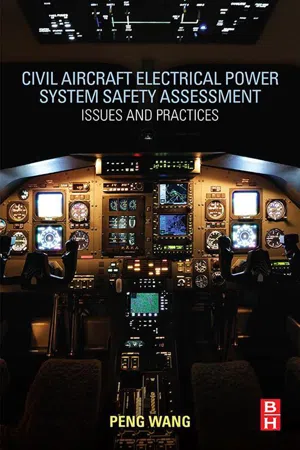1.1.1 Airworthiness
The definition of “Airworthy” in the Oxford Dictionary is “(of aircraft) safe to fly.” “Airworthiness” is the noun form of “Airworthy.”
The definition of the word “Airworthy” was never included in the Code of Federal Regulations until the Federal Aviation Regulations (FAR) Part 3, General Requirements, was established. The definition was included in the guidance materials, such as Advisory Circulars (ACs) and Orders, but never in the Rule. In Part 3, the definition of Airworthy is defined that the aircraft conforms to its type design and is in a condition of safe flight.
In Canadian Aviation Regulations, CAR 101.01, Subpart 1—Interpretation, “airworthy”, with respect to an aeronautical product, means a fit and safe state for flight and in conformity with its type design.
Airworthiness is the measure of an aircraft’s suitability for safe flight. The application of airworthiness defines the condition of an aircraft and acts as the basis for judging its fitness to fly in that it has been designed with engineering rigor, that it has been properly constructed and maintained, and that it is expected to be operated according to approved standards and limitations, by competent and approved individuals, who are acting as members of a certification organization.
1.1.2 Airworthiness Standards
Airworthiness standards are special technical standards and minimum safety standards established to ensure the implementation of civil aircraft airworthiness. Unlike other standards, civil aircraft airworthiness standards are part of national regulations and require strict enforcement.
The establishment of an airworthiness standard has involved continuous revision by accumulating long-term experience, drawing lessons from flight accidents, conducting necessary demonstration or argumentation, and soliciting opinions from the public. Thus far, FAR of Federal Aviation Administration (FAA) and Certification Specification (CS) of European Aviation Safety Agency (EASA) dominate the worldwide airworthiness standards. Taking the international characteristics of civil aviation airworthiness standards into account, many countries have established their airworthiness standards by recognizing FAR and CS with consideration of their own national situations. For instance, certification authorities from China, Canada, and Russia all have established their own airworthiness standards based on FAR and CS.
FAA airworthiness standards are as follows:
• Part-23 Airworthiness Standards: Normal, Utility, Acrobatic, and Commuter Category Airplanes.
• Part-25 Airworthiness Standards: Transport Category Airplanes.
• Part-26 Continued Airworthiness and Safety Improvements for Transport Category Airplanes. (Note: EASA also contains CS-26, but its name is Additional airworthiness specifications for operations, its initial release was on December 5, 2015.)
• Part-27 Airworthiness Standards: Normal Category Rotorcraft.
• Part-29 Airworthiness Standards: Transport Category Rotorcraft.
• Part-31 Airworthiness Standards: Manned Free Balloons.
• Part-33 Airworthiness Standards: Aircraft Engines.
• Part-34 Fuel Venting and Exhaust Emission Requirements for Turbine Engine Powered Airplanes.
• Part-35 Airworthiness Standards: Propellers.
• Part-36 Noise Standards: Aircraft Type and Airworthiness Certification.
• Part-39 Airworthiness Directives.
The above airworthiness standards are all appropriate for civil products. For materials, parts, and appliances used on civil products, they are referred to as TSO authorization according to the Technical Standard Order (TSO) standard. A TSO is a minimum performance standard issued by the certification authority for specified materials, parts, processes, and appliances used on civil products.
As of May 2016, there are 162 current effective FAA TSOs and 144 current effective EASA European Technical Standard Order (ETSOs). In recent years, despite of some slight differences in marking and data requirements, the contents of TSOs issued by the FAA and ETSOs have been basically identical in technical aspects (except the ETSO 2C series). FAA and EASA introduce mature technical standards in industry as the key technical requirements for TSO.
Airworthiness Directives (ADs) are legally enforceable rules that are applied to the following products: aircrafts, aircraft engines, propellers, and appliances. In FAA, each AD is a part of Part-39, but they are not codified in the annual edition. The authority issues an AD addressing a product when it finds that: (1) an unsafe condition exists in the product; and (2) the condition is likely to exist or develop in other products with the same type of design. Anyone who operates a product that does not meet the requirements of an applicable AD is in violation of Part-39.
AC is a recommended and interpretative material of the compliance means with the applicable regulations. Though it is stated in almost all ACs that the means it introduces are not mandatory or are not the only means, and that the applicants can adopt other methods to demonstrate their compliance with the regulation. In general, if the type certificate applicants do not propose more appropriate means, priority should be given to using the means introduced in the AC to demonstrate their compliance with applicable regulations.

